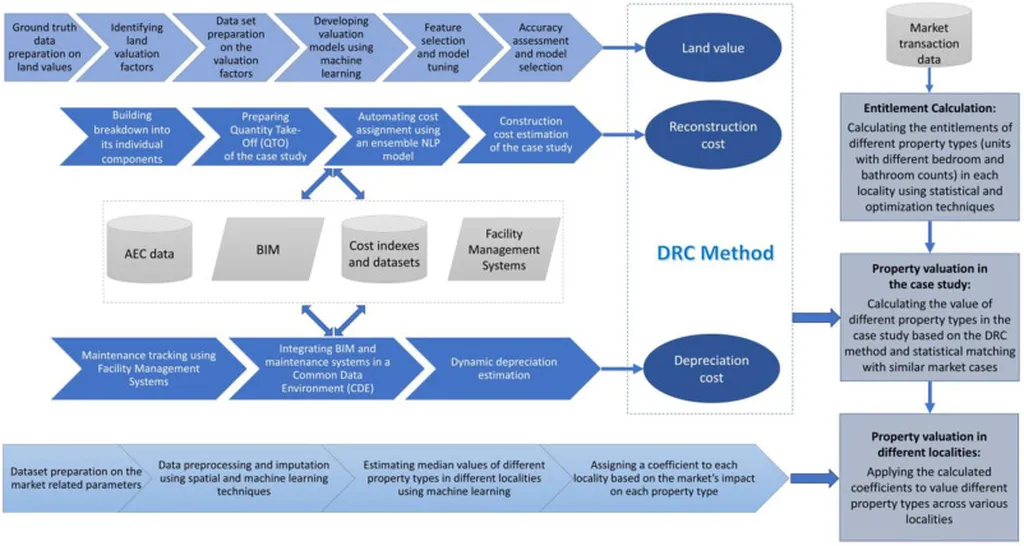In the ever-evolving landscape of construction and facility management, a groundbreaking framework is set to revolutionize how we estimate building depreciation. Developed by P. Jafary of the Building 4.0 CRC in Caulfield East, Victoria, Australia, this innovative approach integrates Building Information Modelling (BIM) with cost estimation datasets and maintenance data from Computerized Maintenance Management Systems (CMMS) or Facility Management Systems (FMS). The result? A dynamic, real-time depreciation estimation tool that could significantly impact property valuation and asset management, particularly in the energy sector.
At the heart of this framework lies the Common Data Environment (CDE), a centralized platform that consolidates and synchronizes data across various systems. By leveraging interoperability standards such as Industry Foundation Classes (IFC) and Construction-Operations Building Information Exchange (COBie), the framework ensures seamless data exchange and integration. “This integration provides a robust foundation for accurate and condition-based depreciation estimation,” explains Jafary. “It enhances property valuation practices by reflecting the actual wear, usage, and maintenance history of building assets.”
The implications for the energy sector are substantial. Energy infrastructure, such as power plants, renewable energy facilities, and grid systems, often involve significant capital investments. Accurate depreciation estimation is crucial for financial planning, insurance, and resale value. By providing real-time updates and comprehensive visibility into the state of building components, this framework enables energy companies to make informed decisions about maintenance, upgrades, and investments.
Moreover, the framework’s ability to track maintenance records, asset conditions, and lifecycle data systematically can lead to more efficient energy management. For instance, understanding the depreciation of solar panels or wind turbines can help energy companies plan for timely replacements or upgrades, ensuring optimal performance and energy output.
The research, published in ‘The International Archives of the Photogrammetry, Remote Sensing and Spatial Information Sciences’ (translated to English as ‘The International Archives of Photogrammetry, Remote Sensing and Spatial Information Sciences’), marks a significant step forward in the field of construction and facility management. As the industry continues to embrace digital transformation, such innovations are poised to shape the future of asset management and property valuation.
In the words of Jafary, “This framework is not just about estimating depreciation; it’s about empowering stakeholders with data-driven insights to make better decisions.” As the energy sector grapples with the challenges of aging infrastructure and the transition to renewable energy, this framework offers a promising solution for more accurate, efficient, and sustainable asset management. The future of building depreciation estimation is here, and it’s dynamic, integrated, and data-driven.

